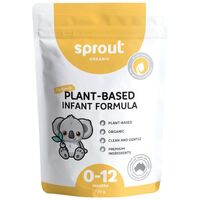The Super Veg That Can't Be Beet
Date Posted:10 May 2023
What do Olympic athletes and the elderly have in common? And no, this isn’t a trick question…
They both benefit from increased blood flow to their muscles, tissues and organs! OK, so that probably isn’t the most exciting fact of the day, but here’s one that is:
The humble beetroot is a vastly underrated vegetable!
.png)
Here are the facts:
- The purple-pink colour is an indicator of powerful antioxidants called belatins, which help in the fight against aging and have been shown to kill colon cancer cells in lab settings
- Studies with cyclists have shown that those who take a shot of beetroot juice can cycle an average 92 seconds longer than those who took a placebo
- Another study showed volunteers who ate beetroot a few hours before intense workouts were able to keep going for as much as 16% longer than those who didn’t.
Fun fact: As a result of these studies, nearly every athlete at the 2012 Olympic games was found to be sipping on beetroot juice! - Yet another study saw a group of volunteers with high blood pressure eating beetroot for a few weeks. After this time, the average blood pressure of the group was observed to fall about 5mmHG, which would lead to a reduction in their risk of stroke and heart attack of about 10%!
A speedy little science lesson:
Beetroot contains nitrate, which when consumed in vegetable form, transforms into a chemical called nitrite by bacteria in our mouth. This compound is then changed in the body into nitric oxide, which dilates blood vessels to increase blood flow to our muscles, tissues and organs. More blood, more oxygen, maximised efficiency! And who doesn’t love efficiency right?
.png)
How to eat more beetroot:
OK, so beets are not everyone’s cup of tea, but with a little seasoning, or combined with your favourite fruits/veggies, it can become a delicious part of your diet.
Here are some simple ideas of how to get more beetroot into your body (the recommendation is 2-3 beets, 2-3 times a week). As a side note: pre-cooked or pickled beetroot is lower in nitrate content, so fresh is best.
1. Cut the top and tail off, wrap in foil and roast in the oven as you would a potato, then slice and serve with a drizzle of olive oil and a grind of sea salt
2. Grate some raw beets into coleslaw, sauerkraut or salad
3. Blend raw or cooked beets into a smoothie
4. Juice it with a squeeze of fresh lemon
5. Beetroot brownies anyone?
And, if you just want to be super efficient about it, you can simply buy pre-prepared beetroot juice, which you can then take in shots, a glass, or add to your favourite smoothie (look for one without sugar or preservatives).
The best news here? Our sellout Biona organic beetroot juice is back in stock! Using only sustainably farmed produce free from any nasties, this delicious and handy juice contains only beetroot and lemon juice (not from concentrate). And with all these fun facts at the ready, just try and stop your customers from snatching them off your shelves!
.png)
If you haven’t already, simply sign up for a wholesale account today to access our entire product range of organic, eco-friendly and sustainable goodies, as well as exclusive monthly promotions. You can’t beet that!
Source: Just One Thing by Dr Michael Mosley





